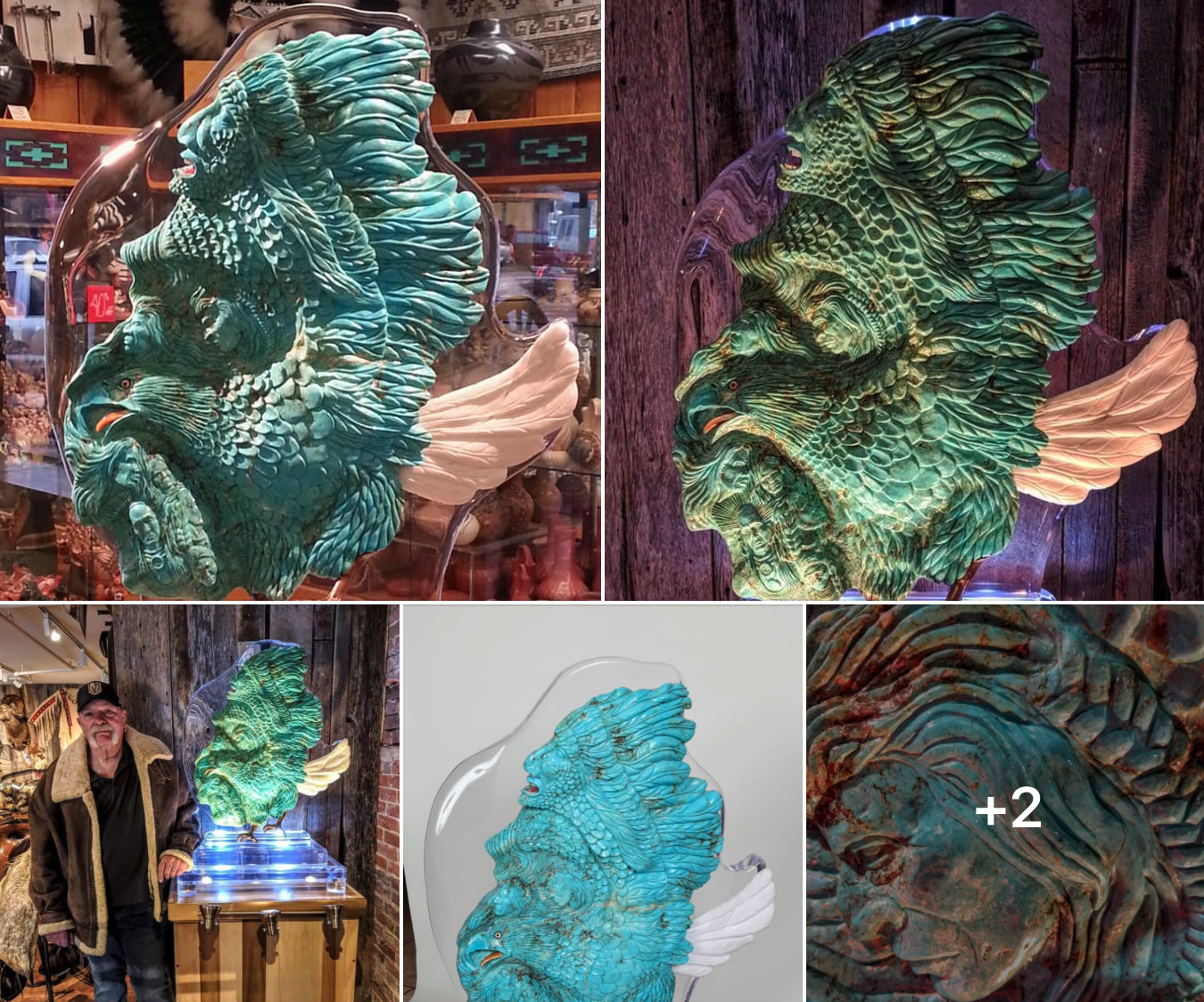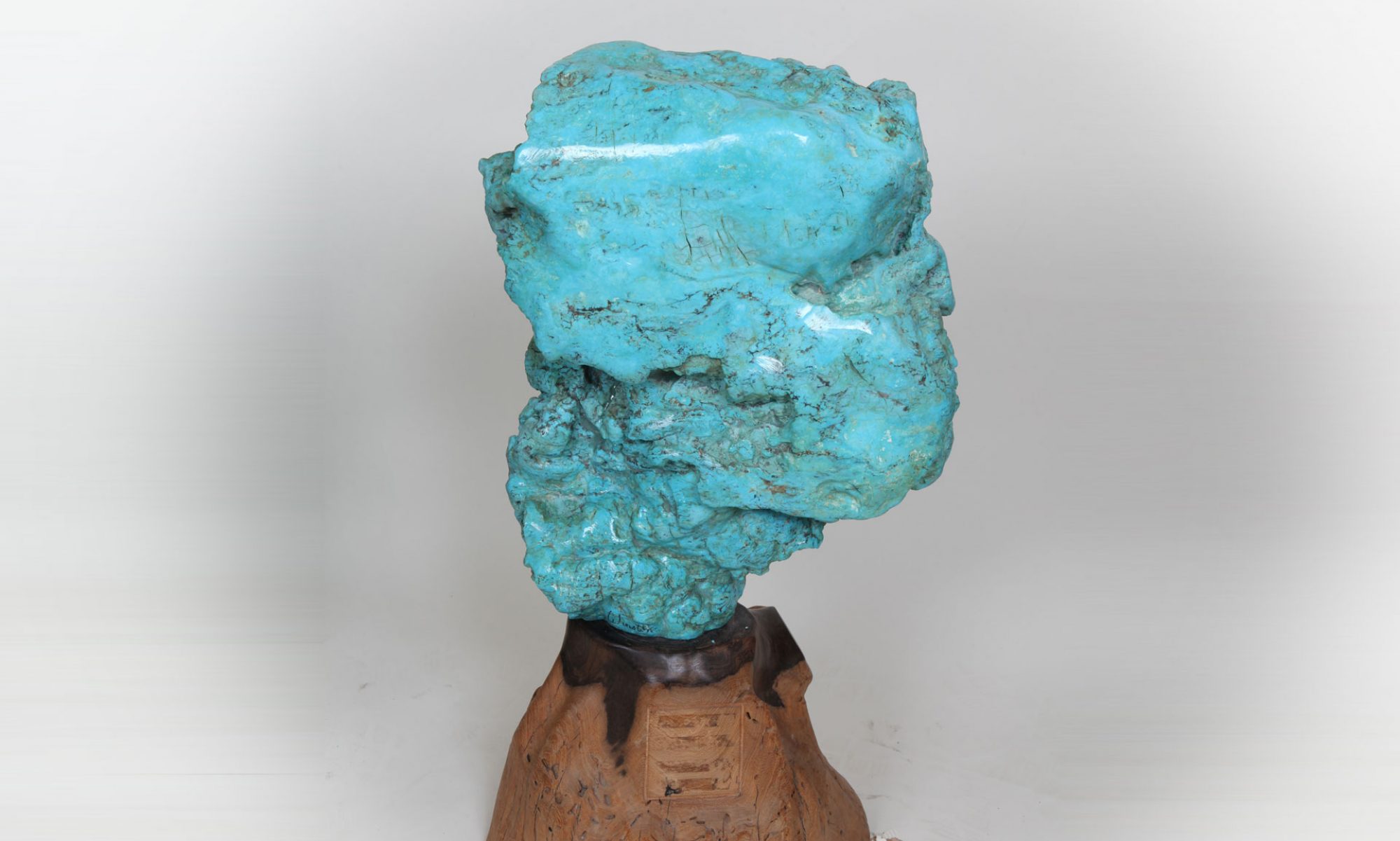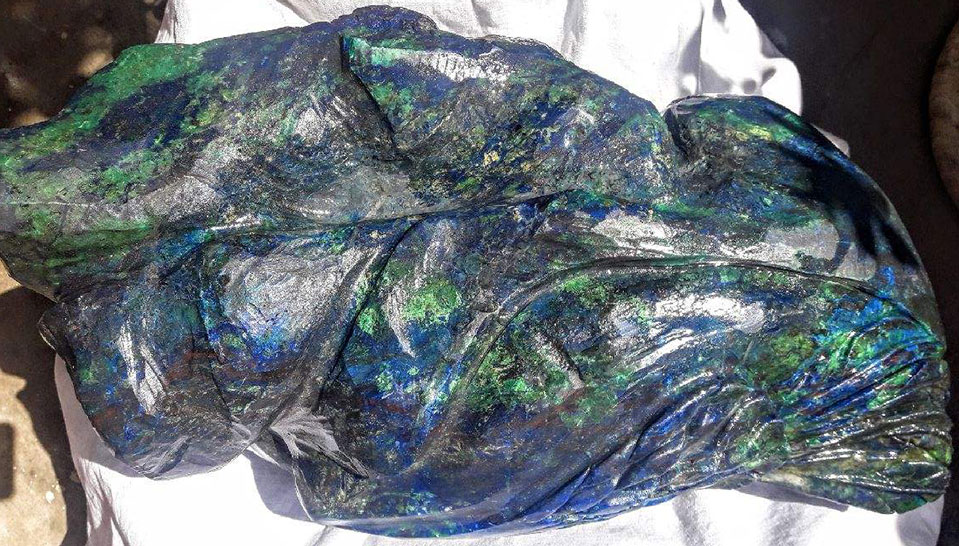The stone is a semiprecious stone that is a by-product of copper, silver and gold mining. The blue-green color of the stone reflects the colors of copper when it has sat and tarnished into those beautiful deep blue-green corrosions. Thus the same minerals create copper… makeup turquoise……sort of! When I lived in Arizona I would go out to the mines once in a blue moon and pick the stone out of rain drenched mudslides during the Monsoon Season late August and early September. I simply shined large halogen lights from my truck and drove the strip mine banks looking for that wet blue stone to appear. With my trusty pick in hand, I would chip the stone out of the wall. The Phelps Dodge Mining guards would let me in on the weekend for $20.00 a night and I would pay them $5.00 a pound and a six pack of beer for whatever stone I drove out with. Believe me, those days are long gone, folks! Today the mining process has changed a great deal. Hardly any mines, except for the famed Colbaugh Family in Kingman Arizona, are looking to preserve this wonderful gemstone any longer.
They no longer can slow down the process of producing 57,700 tons of copper cathodes a year. So why is that? Why do the mines not give a hoot about the many semiprecious stones like malachite, quartz, tourmaline, hematite and beautiful clusters of iron pyrite? Here is my shortened simple answer….ready?
Back in the late 60’s America started a hippy movement that brought with it some of the most outlandish turquoise jewelry in the forms of huge Jimmy Hendrix and Jim Morrison Concho Belts, Squash Blossoms, Needle Point, Zuni Inlay and Navaho Clusters all that was second to none today. The mines were at that time under great demand to produce the stone the crazed world run on turquoise jewelry and carvings. I know, I started my career in September of 1976 and never looked back. Today…..a different story. For all practical purposes, the Indian Jewelry business is dead in the water. It has been for many years but even the best of stores don’t want to face up to it and continue just getting by from year to year. So, my opinion is there are far and few of us left in the industry still working with the gemstone. I like a few others have found my own special path carving multi-gem belt buckles and have been fortunate and blessed with collectors and dealers over the years that seem to still really enjoy my crazy works.
So why don’t we see these huge turquoise nuggets coming from these huge mines any longer that use to produce turquoise on a daily basis?
Strip mining by the early 1990’s had become near extinct because it was not cost-effective. Today advanced computer monitoring systems engaged with large “crushing concentrators “ reduce all the stone materials down to a fine dust with ball and bar crushing systems mixed with high flow water to produce fine flakes of floating copper and zero gemstone findings left for us collectors to purchase. What does this mean? In simple terms, we are not ever going to find another large quality gemstone like this turquoise nugget out of any major copper mines. It’s one thing to hand dig until your fingers blister for just a few pounds of tailings but to hand dig and find a 97 pound nugget, you’ll find your chances better at playing Powerball with one quick pick. Looking at today’s market and how little real fine turquoise is left I’ve personally interviewed with over 20 of my long time dealers across the country and I’ve found that the average selling price per karat of just common clean “stabilized” turquoise retail is averaging $10.00 a karat. Introducing this figure to the reading audience, I would like to make the following offer regarding the carving of this beautiful gemstone now public to the world.
97 pounds of turquoise breaks down as 453 grams per pound or 43,488 grams for 97 pounds. There are 5 karats of stone in every gram weighed. This in turn for 97 pounds comes out to 219,705 karats for the existing stone. If we were offering the stone for a purchase price of the low jewelry grade turquoise average of $10.00 a karat the stone would value at $2,194,705.00
Today we are announcing the offering of a one of a kind, once in a lifetime purchase of a SCULPTURED rare gemstone. Finished carving would between owner and sculptor Winston.
Estimated time of carving would be between eighteen and twenty-four months. The subject is limited to the stone but I feel it can range from a bust of the owner with their favorite horse to a company logo with an animal, eagle, pet or loved one carved in stone to be unearthed maybe 10,000 years from now letting them know what our generation was all about. Up to it and continue just getting by from year to year. So, my opinion is there are far and few of us left in the industry still working with turquoise gemstones. I, like a few others, have found my own special path carving multi-gem belt buckles and have been fortunate and blessed with collectors and dealers over the years that seem to still really enjoy my crazy works.
On the weekend of Sept 1st 1976, with a borrowed dental hand piece and three small flats of turquoise, Winston sat down to three full days of carving and came up with three carved and polished tiny turquoise leaves. Now thirty one years later, he carves the same three leaves in twenty one minutes!
The art of sculpting gemstones has been a totally self taught process constantly evolving in tactic, equipment and speed. His jewelry works are one of a kind pieces found nowhere else in the world.


